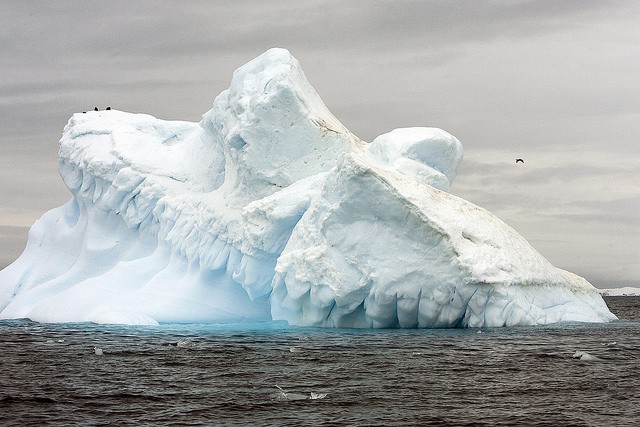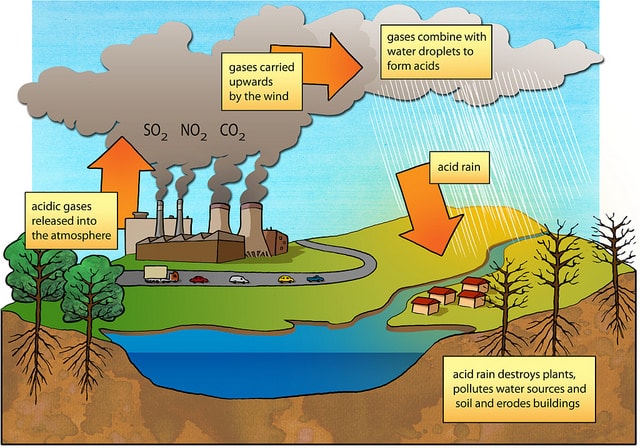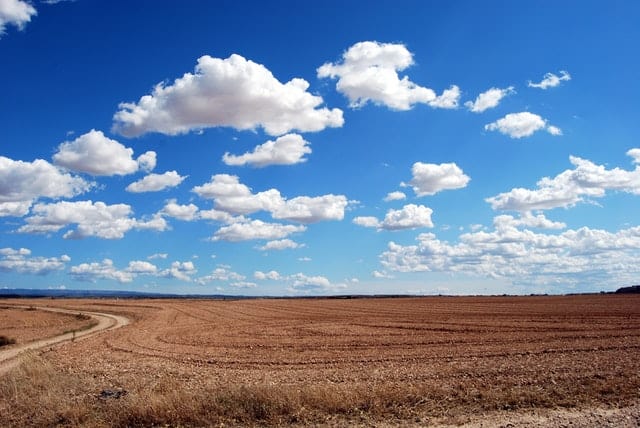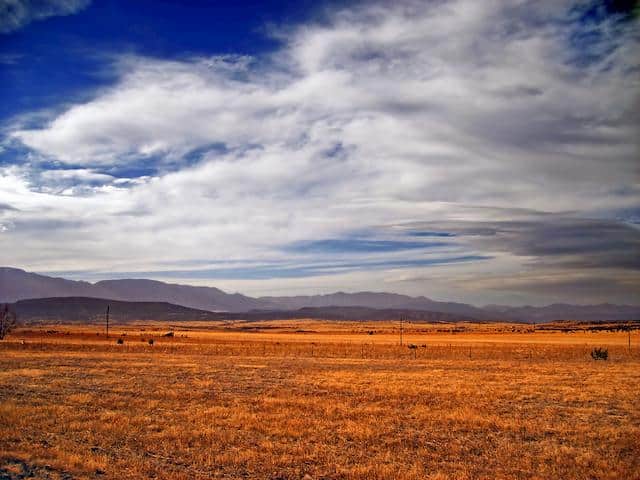30 Fascinating Facts About Glaciers You Probably Didn’t Know

First and foremost, a glacier is a continuous body of ice which moves constantly under its own weight. They are known to form where the temperature is low enough to allow falling snow to accumulate and slowly transform into ice. Below are 30 fascinating facts about glaciers.
30 Fascinating Facts About Glaciers
Fact 1: More often than not, glaciers creep their way across vast regions, spreading their hefty mass of hundreds of years of compacted snow and ice all swaths of land standing in their way. Few glaciers appear dusty and rocky while others radiate such a brilliant aquamarine color. This makes them look as if they were lighted from within by an intense halogen bulb.
Fact 2: Glacier ice covers about 15 million sq km (5.8 million sq mi), or 10 percent, of Earth’s total land area.
Fact 3: Interestingly, the Hudson Bay in Canada was formed during the last ice age when the weight of glaciers on the continent pushed the crust below sea level. Since the ice has melted, the bay is currently in the process of rebounding outwards
Fact 4: Glacier growing (a practice aimed at creating small new glaciers to increase water supply for crops) takes place in the Himalaya regions. To carry out this process, the farmers acquire ice from naturally occurring glaciers and carry it to high altitude areas where the ice is put inside a small cave dug out in a slope.
Fact 5: During the last ice age when Great Lakes were formed, the massive glaciers distorted the Earth’s crust so much that the Great Lake area is still rebounding and has fluctuating water.
Fact 6: Interestingly, the Antarctic ice sheet is actually a glacier and has existed for at least 40 million years. Were it to melt in its entirety, sea levels would rise 210 feet worldwide, according to the U.S. Geological Service.
Fact 7: A volcano in 1985, which occurred in Colombia (which was covered by glaciers) erupted, instantly melting the glaciers. About two hours later, a 100 ft deep flood of rock and water traveling 39 feet per second leveled an entire nearby village, killing 20,000 out of its 29,000 residents.
Fact 8: Due to the deposition and compaction of layers of well-formed snowflakes, glacier ice has a much more consistent structure than frozen water, making it technically a form of rock similar to limestone.
Fact 9: By the time Otzi, a well-preserved 5300-year-old mummy, was found in a glacier, hikers thought it was a body from war atrocities of WW2. Again, Otzi is known to have 19 living relatives to this day.
Fact 10: In particular, glacial retreats in southern Alaska are leading to an increase in the frequency of earthquakes and the Bering Glacier, in particular, is so massive its weight stabilizes the subduction of an underlying Pacific plate which is underneath the North American plate.
Fact 11: The entire Kolka Glacier broke free in 1992, killing 125 people and reaching speeds over 100km/h. Despite the fact that the glacier was completely destroyed, it reappeared just 2 years later
Fact 12: An essential ingredient for glacier-making is a location where snow stays put year-round. By the time new layers arrive each winter, they start to crush existing blankets. Its weight distorts the snow crystals that make up the older layers, turning them into sugar-like grains. With time these grains get bigger and denser until, eventually, genuine glacial ice is produced.
Fact 13: Just like the mighty Mississippi, glacial ice—which is driven by gravity—flows from high to low elevations. During the process, it often removes and transports chunks of rock (This is called ‘glacial erratics’), sometimes across a few hundred miles.
Fact 14: It is believed that ancient glaciers may have dotted Mars. Mars’ red surface is rife with canyons, but did long-gone glaciers have anything to do with their creation? Interestingly, some scientists think so. The scientists’ theory got a major boost when a mineral called jarosite was identified along the walls of an enormous canyon known as Ius Chasma. Jarosite on Mars, is created by reactions with water, usually through evaporation.
However, there was no way that a puddle was evaporating 3 miles up a cliff face. Therefore, it is believed that a glacier picked up some sulfur and as the Sun melted the ice along the edges, the water reacted with the sulfur to produce jarosite.
Fact 15: It is worth noting fact that glaciers can move at a rate of over 50 feet per day; of particular importance is the size requirement for glaciers where it has been established that proper glaciers must be a minimum of 0.1 square kilometers—that’s almost 25 acres, or nearly 19 football fields!
Fact 16: The largest Glacier on Earth is about 60 Miles Wide and around 270 Miles Long. The glacier is Antarctica’s Lambert glacier, named after former Australian director of national mapping Bruce P. Lambert, who charted out the area during the late 1950s.
Fact 17: In the peak of the last Ice Age, glaciers covered about a third of Earth’s total Land mass. About the past two billion years, our little blue planet has withstood at least five main ice ages. In fact, the latest one has spanned from 2.6 million years ago to the present day (According to some experts, we are currently living through another ice age).
Fact 18: In contrast to Popular Belief, you won’t see frozen mammoths suspended in glaciers. These mummified bodies of these great, extinct mammals are usually only found covered under frozen sediment and not—as many assume—floating inside glaciers.
Fact 19: Fact has it that, not all glaciers dwell near the poles. Glacial forms can be found on every continent but Australia (although New Zealand has some) and many “live” closer to the equator than one might expect—Mexico’s elevated areas are home to glaciers while the Ecuadorian Andes also have a few.
Fact 20: You can think of glaciers as ‘rock flour’. Bear in mind that rock flour is very similar to Earthy saw dust. By the time glaciers grate along the earth’s surface, they grind bedrock into a fine, powdery substance. As the rock flour enters a lake, something magical takes place. Due to the fact that the rock flour is too fine to sink, the material may get suspended and turn the water turquoise blue.
Fact 21: Of particular interest is the fact that some Glaciers look blue. This is because ‘blue’ is the only color that glacial Ice cannot absorb, thus, the color is reflected and perceived by the eyes. In contrast to red and yellow light waves, blue light can penetrate snow and ice, thus creating that cool shade of winter wonderland azure.
Fact 22: It has been reported that glaciers contain an estimated 69 percent of the world’s fresh water supply. However, lakes, rivers, swamps, and similar bodies can only claim a combined 0.3 percent of the world’s fresh water supply.
Fact 23: About 100,000 glaciers can be found in Alaska. The glaciers cover some 28,000 square miles of the 49th state. Given that glacial ice farmers (Alaskans) have the right permit they are legally allowed to harvest glacial ice.
Fact 24: Two main types of glaciers exist. They are:
- The Alpine glaciers: Which flow downwards from mountaintops and slide through valleys.
- The continental glaciers: On the other hand, continental glaciers are large, horizontal expanses that are not seriously affected by the hills or mountains they cover. This type of glacier generally dwarfs their alpine counterparts.
Fact 25: During the summer of 2012, the Jakobshavn Glacier in Greenland set a new world record by traveling an impressive—by glacial standards, at least—150 feet per day.
Fact 26: About 10 percent of the Earth is covered by glaciers; during the last Ice Age, they covered one-third of the Earth’s surface.
Fact 27: Glacial ice is the largest reservoir of fresh water on the planet, storing an estimated 75 percent of the world’s supply.
Fact 28: Glaciers can be found in 47 countries in the world.
Fact 29: An individual glacier can range in length from the equivalent of a football field to more than 100 miles.
Fact 30: The Grímsvötn volcano of Iceland erupted in 1996 despite the fact that it had been buried by roughly 2000 feet of glacial ice.
Sources:
- 16 Cool facts about glaciers. By Mark Mancini (2016, February, 29). Retrieved from: mentalfloss.com/article/62638/16-cool-facts-about-glaciers.
- Ten interesting facts about glaciers. By Elissa Leibowitz Poma, WWF Travel Manager (2009, December, 18). Retrieved from: https://www.worldwildlife.org/blogs/good-nature-travel/posts/ten-interesting-facts-about-glaciers






